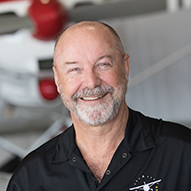Training and Safety Tip: Outsmart the wind
Use available ground references
Ground reference maneuvers can rank high on the list of challenges student pilots face. One day the maneuvers are a piece of cake, another day they are nearly impossible to perform.
Here’s why: wind speed and direction. Sometimes the wind is light and from one direction, other times it’s gusty and shifting, causing our little trainer’s ground track to wander.
A long straight road is ideal for two of the three ground reference maneuvers, S-turns and rectangular courses. If there is no suitable road, use a shoreline or a ridge.
For the rectangular course, the road is all you need. Enter on a 45-degree downwind, just as you would if you were joining the traffic pattern. Adjust your heading to compensate for the wind. Estimate your ground track and remain parallel to the road. If it takes a 10-degree correction to the right to maintain a straight ground track, you’ll know that a 10-degree correction to the left will work on the upwind leg. The opposite direction requires an opposite correction. Easy. The same is true for the crosswind and base legs.
For S-turns use that same road and once again enter on the downwind. This is where your groundspeed will be highest, so your bank angle will be steepest when initiating your turn. You can always shallow it out if you bank too aggressively, but you can’t always steepen it. This is why you must enter on the downwind.
Pick two reference points that are roughly the same distance out but on opposite sides of the road—a tree and the edge of a pond, for instance. Those can become your reference points for the apex of your turn and help keep your two 180-degree turns equal in size, no matter what the wind is doing.
The same is true for turns around a point. Pick your central point, but also pick four objects at roughly cardinal headings surrounding it. If you adjust your bank to compensate for the wind and track over those four objects, you’ve done a circular turn around a point.
The wind is tough, but not smart. You are. By using more than one reference on the ground, you will find success.



